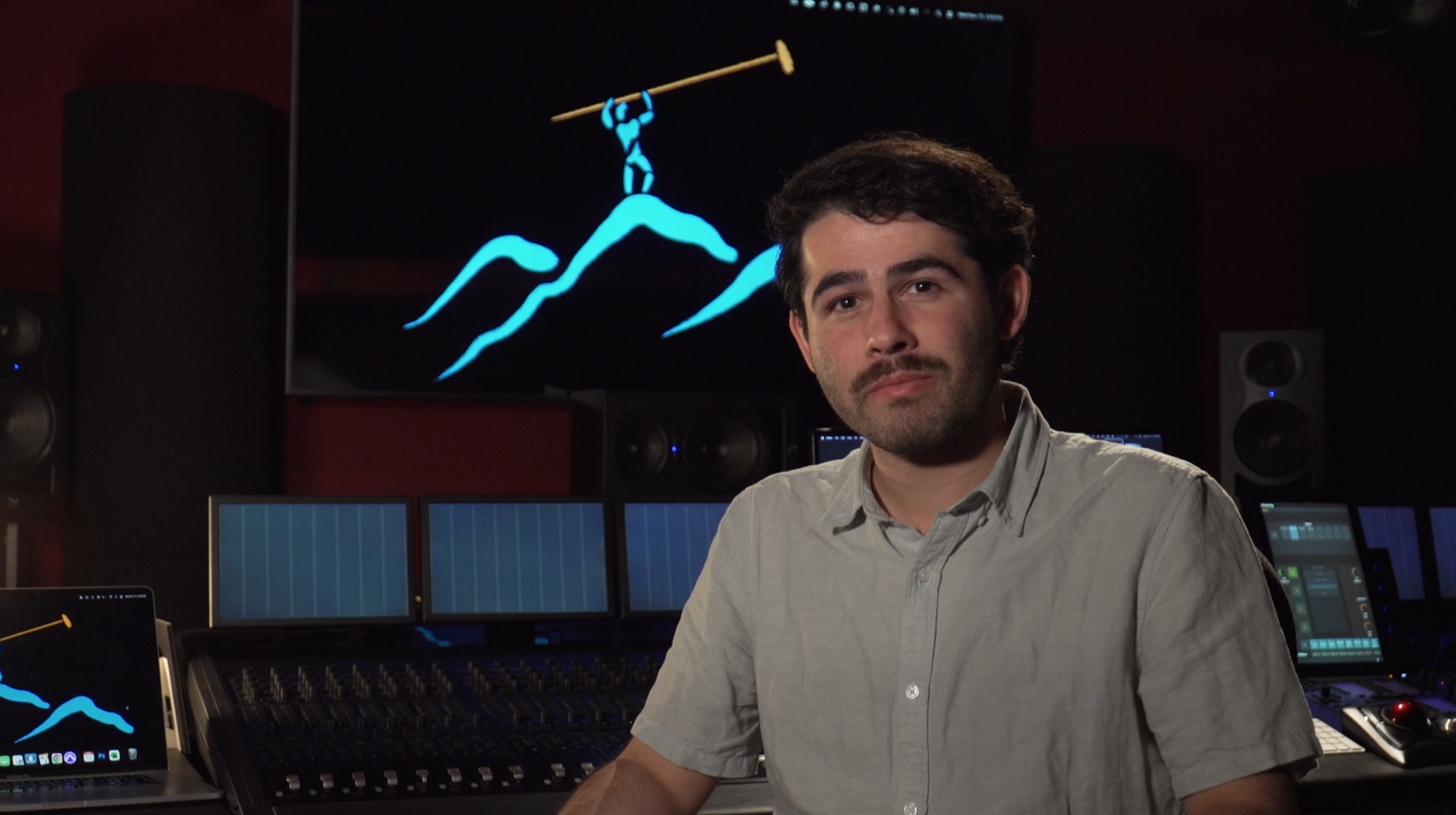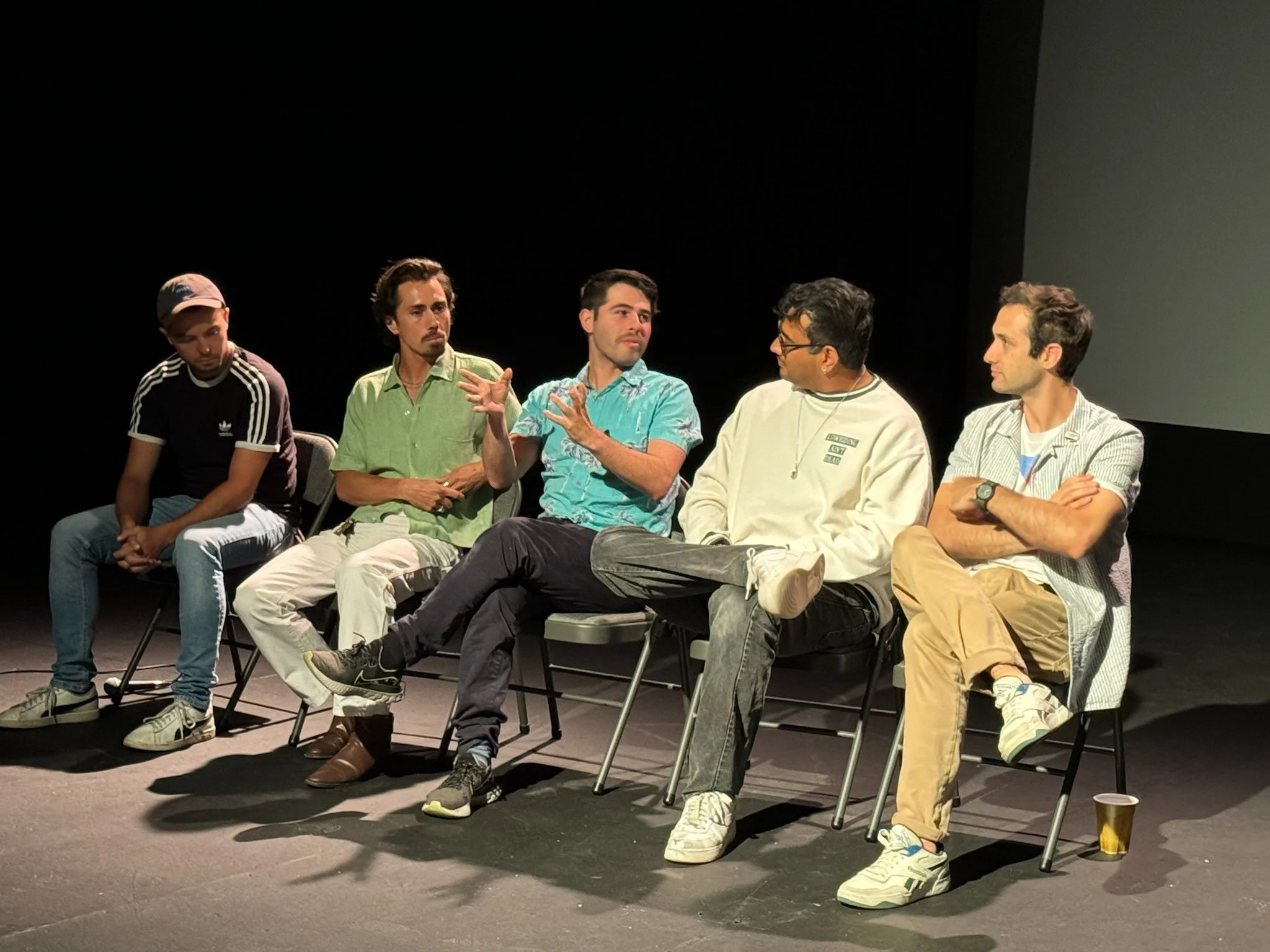The Architecture of Sound: An Interview on Audio Engineering with Oliver Boon
Sound is one of those creative forces that shapes how we feel long before we realize it’s happening. It expands a world, sharpens a moment, and anchors a story in place all without ever asking to be seen. In talking with Oliver Boon, I wanted to explore that invisible architecture: how sound becomes atmosphere, emotion, memory, and meaning. Oliver’s work moves fluidly between production sound mixing, post sound editing and full-scale audio world-building, and throughout our conversation, he breaks down the craft with such clarity and curiosity that you start to hear films a little differently.
Oliver Boon is a British production and post-production sound mixer/editor with experience across film, television, and digital media. Originally from the UK, he brings a cinematic, detail-driven approach to everything from dialogue editing and sound design to surround mixing. His work spans award-nominated theatre pieces, narrative films, and high-profile digital content.
You work across sound mixing, editing, and audio storytelling. How do you personally define sound as an art form outside of music?
OB: There is a classic saying I’ve heard from multiple sound veterans: “sound without picture is radio and picture without sound is surveillance.” The two are intrinsically linked, and while we think of films, the visual element often comes first — but it is usually the sound mix that drives the emotion.
What makes it a creative medium in its own right?
OB: I see a sound mix, whether it's for a film, a play, or a podcast, the same way I see music. Like an orchestra, you have different sections (dialogue, sound design, foley, music) that have to be mixed together to become one cohesive piece. Where I’m able to let my creativity shine is through the choices I make when it comes to recording, layering, and manipulating the sound design. I really like what Rick Rubin said about people hiring him for his taste. If you had five different sound editors work on the same movie separately, you would end up with five totally different versions.
When you begin shaping the sound for a project, what’s your process for building the “sonic world” the audience will exist within?
OB: If there is any dialogue in the project, I always start with that first, as unedited dialogue can take you out of the watching experience right away. I then start bringing in different backgrounds to help create an immersive experience. If I have a suburban scene, I might have five to ten different sound clips with birds, lawnmowers, sprinklers, kids playing. When you’re filming, especially on a sound stage, all of the ambiences you’d expect to hear are purposefully reduced so you’re able to capture the clearest audio possible. It all then needs to be added back in post-production. If there is an establishing shot of the scene, I’ll often mix at a louder level at the beginning, and then once we go into the dialogue, I gradually fade down the background sounds so that they can still be heard but don’t take the focus away from the characters.
Can you share a scene or project where sound played a pivotal role in world-building? A moment where the audio changed how the audience understood the environment or the story?
OB: This year I got to work on the upcoming horror film Yellow Eyes, directed by The Number Twelve Looks Like You vocalist Jesse Korman. In the film, there is a demonic relic that possesses its victims, and creating the soundscape with the help of sound designer Ryan Gegenheimer was some of the most rewarding work I have had the chance to be a part of. In horror, it can be easy to go to clichés. It’s finding the intricacies of the story and translating that through sound. Horror movies are all about dynamics — you want to lull the audience into a fake sense of comfort before jumpscaring them into the terrifying moments.
Sound often influences emotion and space in ways viewers don’t consciously notice. What do you listen for when deciding how a moment should feel? Is there some kind of distinct thought process, or is it mainly intuition?
OB: When I am working on a film, I will often have what is known as a spotting session, where I mark down all of the audio moments that need to be added or altered. During this process, I will often listen to the film muted to allow me to audiate (imagine) the sound design from scratch and build the sound world from within.
How do you collaborate with directors or production designers to make sure sound isn’t an afterthought, but instead woven with creative vision from the beginning?
OB: I will set up meetings with the director before working on the project to go through what kind of style and tone they are looking for in their film. A cheat code I have found is building chemistry with my clients early on, because by getting to know the director, I can get a clearer understanding of who they are and what they want creatively.
Silence, texture, and ambience can all carry narrative weight. How do you think about using non-musical elements (or the absence of sound) as storytelling tools?
OB: It is very rare for there ever to be total silence in a film. There was a scene in the psychological thriller To Die Alonewhere the two main characters are talking at night in a tent, and the director, Austin Smagalski, wanted the scene to be nearly total silence. I ended up using recordings I made in Joshua Tree National Park and kept them at a very low level, and then added in sounds of trees cracking. This created a very powerful ambience that heightened the quiet moments between the dialogue.
You’ve worked across film, post-production, and various genres. How does your approach shift when you’re designing audio for different types of worlds — whether that be naturalistic, surreal, comedic, dramatic?
OB: This year, I have had the opportunity to work on several documentary films, and I have found that I am often leaning into a more naturalistic approach. Dialogue recorded in documentaries is often not the best quality, as they are filmed in environments that are not controlled. I worked on Peter Ferriero’s The Best Pizza is in LA, where the majority of interviews take place in kitchens and restaurants, which are notoriously noisy to record in. Knowing this, I leaned into the noise from the recorded audio and only made subtle edits to maintain the authenticity of the interviews.
As audio technology evolves, from spatial sound to immersive installations, where do you see the future of sound design heading? What possibilities excite you most?
OB: It’s very exciting as immersive sound keeps making strides. We will eventually live in a world where everyone will be able to affordably stream in their homes with fully immersive 360 audio. One of the trickiest parts of sound editing is making ADR (dialogue re-recorded after filming) and Foley (sounds recorded to match movements within a film) match the setting it is in. I believe we will eventually get to a point where it will be truly seamless.
If you could create an audio-driven experience with no budget or technical limitations, what kind of world would you want to build?
OB: I have always dreamed of creating a digital map where users from around the world upload audio from their countries and the direct location they are in. Imagine being able to click on and zoom in on the Amazon rainforest or the Antarctic and hear it in clear audio. If I had the money, I would travel around the world and record every environment I come across.
For emerging sound artists interested in world-building, what’s one piece of advice you wish you had when starting out?
OB: Be bold with your choices. You can always be told to lower the volume or pull back, but if you want your mix to really stand out, you have to have the courage to take creative risks. Your taste is your greatest weapon. In terms of starting your career, building relationships is everything. Every time I am on set as a production sound mixer or working on a post sound edit team, I make sure to connect with the whole team, because you never know where your next collaboration will come from. Be open to opportunities!




